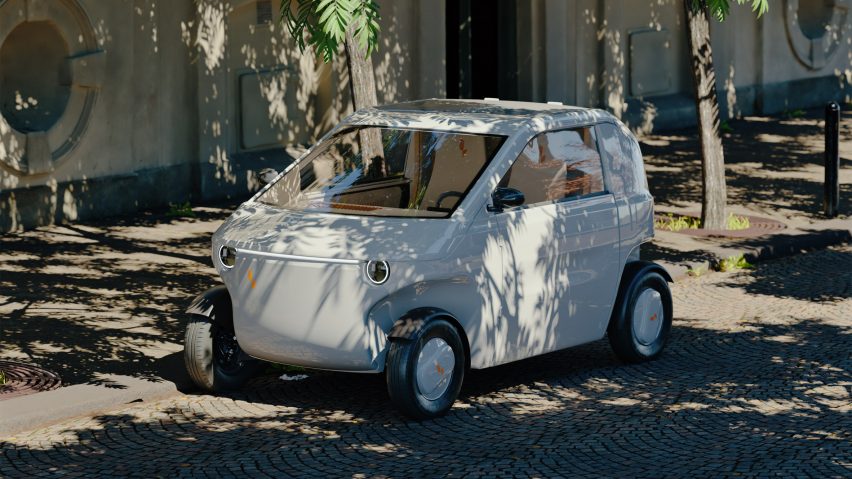
Luvly develops flat-pack mini EV to be "significantly more energy-efficient"
Stockholm tech company Luvly is set to launch Luvly O, a flat-pack mini electric car that it claims could be the future of urban transport.
At just under 400 kilograms, the Luvly O weighs around a quarter of a typical electric vehicle (EV) and is "significantly more energy efficient and cheaper to buy and run than almost all ICE and electric cars," according to the brand.
"The light weight of the Luvly O means that it is immensely more efficient in-use, with energy consumption on the order of 60Wh/km (96Wh/mi), about two to four times better than 'full-size' electric cars," Luvly told Dezeen.
Designed by Joachim Nordwall, formerly of Swedish hypercar brand Koenigsegg, the vehicle is currently in the final stages of development and is set to launch in the second half of 2023.
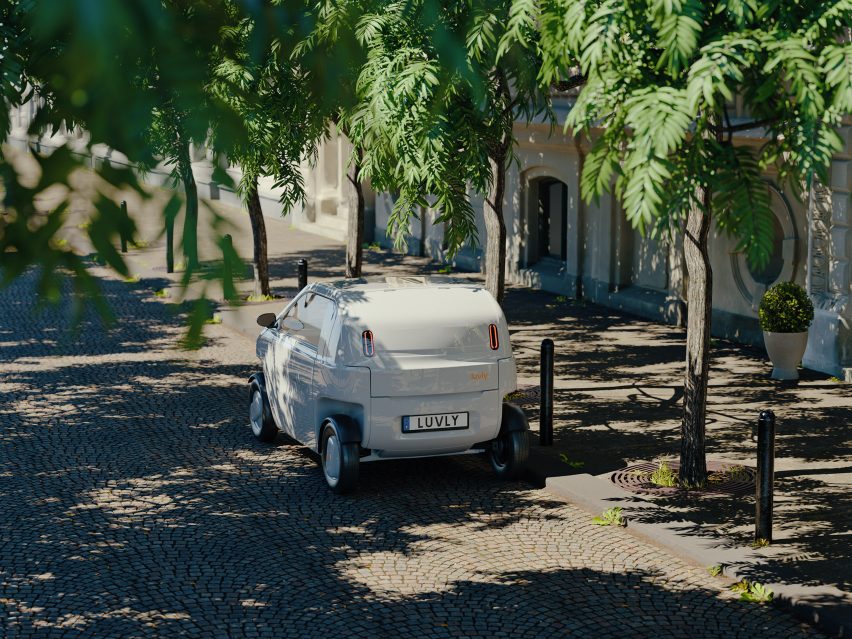
Luvly CEO Håkan Lutz, who co-founded the company in 2015, believes that light urban vehicles (LUVs) such as Luvly could revolutionise mobility in cities and trigger a shift away from oversized cars.
"The average European uses a car for 33 kilometres a day, carrying one to two people, in a city, at slow speeds," he told Dezeen.
"For this, the average car is obviously too big. Superfluous cars produce more pollution, are louder, take up more space and are more dangerous to pedestrians."
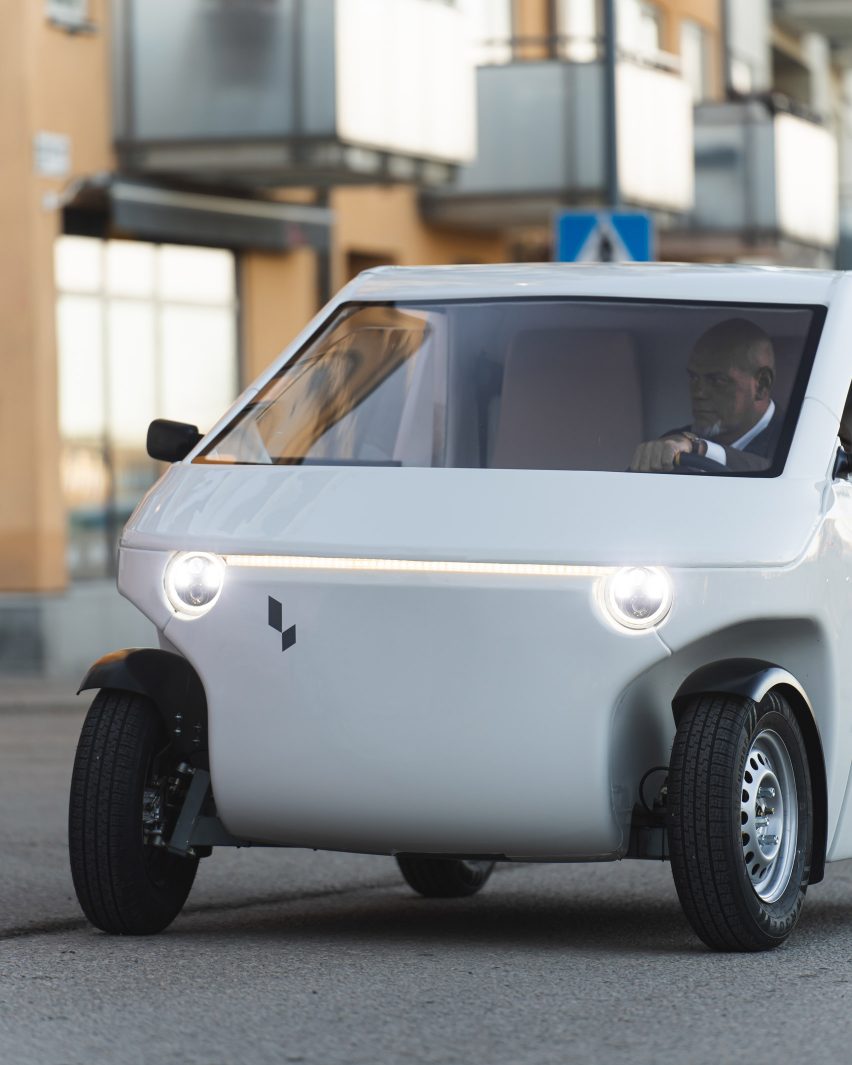
The four-seater Luvly O has a range of 100 kilometres and a top speed of 90 kilometres per hour, delivered by two removable batteries weighing only 15 kilograms each.
It is 2.7 metres long, 1.53 metres wide and 1.44 metres tall. In comparison, the Tesla Model Y, Europe's best-selling electric vehicle, is 4.75 metres long and weighs more than 1,900 kilograms.
To meet an acceptable level of safety without piling on weight, the Luvly O borrows from the design of formula racing cars with energy-absorbers positioned around the chassis and passengers enveloped in a "sandwich-composite safety cell".
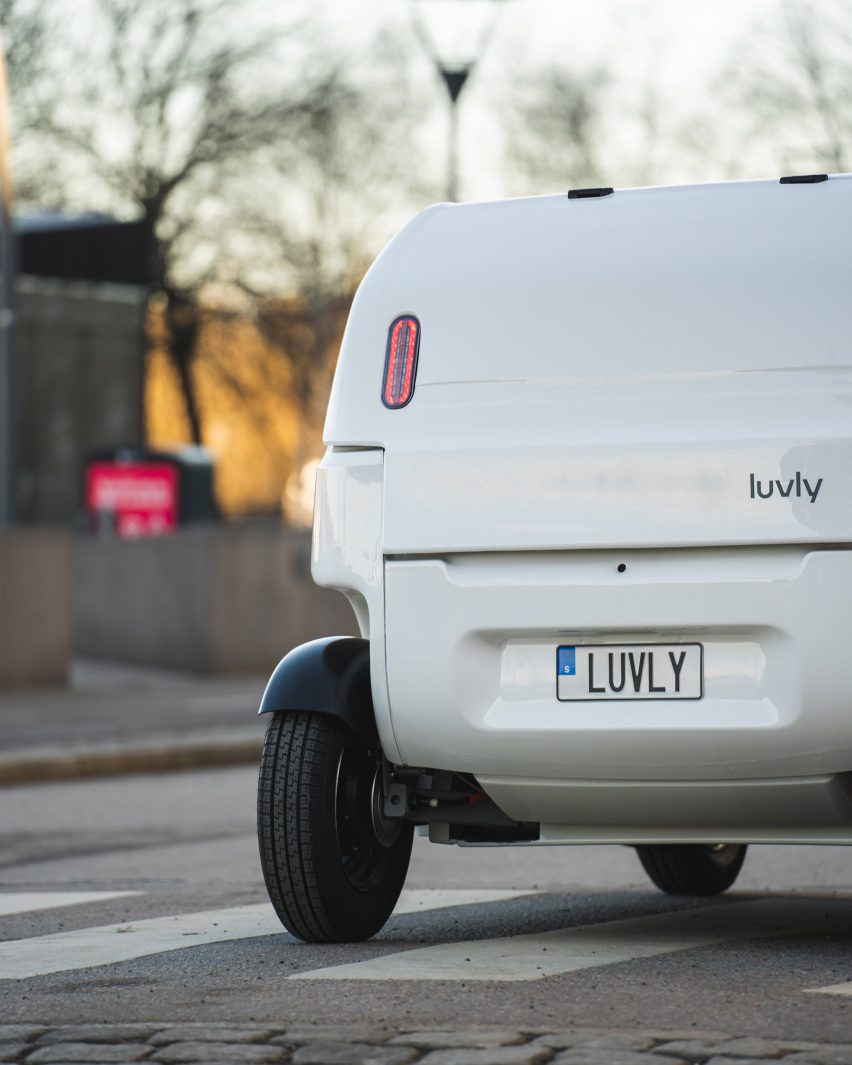
"Ultimately, consumers need to abandon the notion that bigger is better," added Lutz. "Reducing the size of cars in our cities will result in a plethora of environmental and societal benefits, lowering emissions and meaning that city councils can focus on redesigning our streets for people, not cars."
Luvly claims that energy consumption from the production, shipping, and distribution of LUVs such as Luvly is up to 80 per cent lower compared with electric cars.
The parts for Luvly will be shipped flat-pack to "micro-factories" near major markets where they will be assembled through a largely snap-together process before being delivered to customers.
All the parts required for 20 LUVs can be transported in a single shipping container. Nearly all the components are recyclable, according to Luvly.
Luvly also sells licenses to its patented technical platform, allowing organisations to manufacture their own versions of the Luvly O.
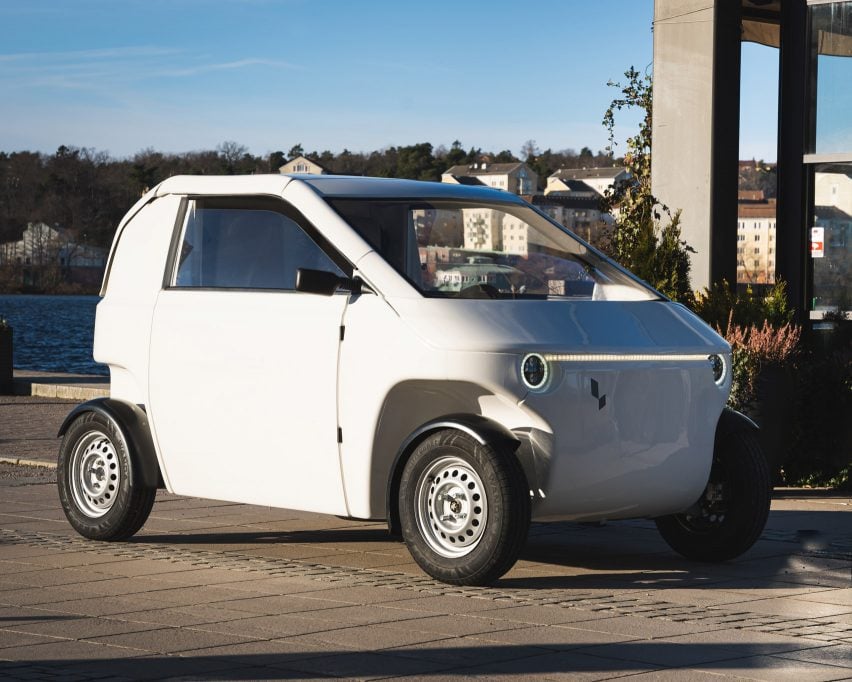
Cars have been consistently growing in size for decades, but Lutz argues that people are ready for something different.
"Amongst city-dwellers, there is growing frustration over the polluted air, congestion and cost incurred by cars," he said.
"If you want any proof that there is an appetite for mini-mobility vehicles, just look at how popular E-scooters have become in every major European city."
In a recent interview with Dezeen, Peugeot's head of concepts Philippe Emmanuel-Jean agreed that electrification could see city cars get smaller, while Maserati's CEO said it is designing electric cars to be as fun to drive as those with combustion engines.
The images are courtesy of Luvly.